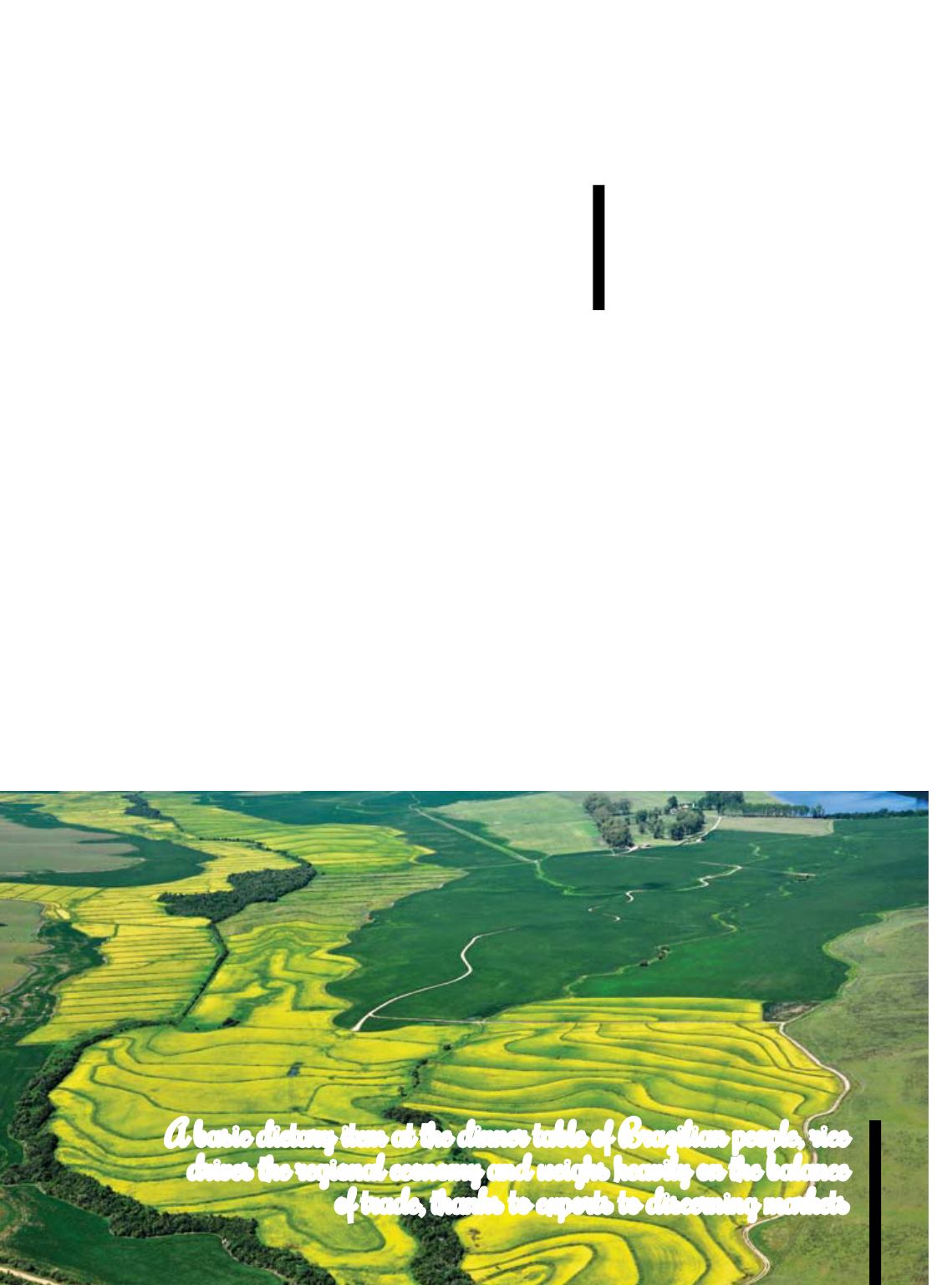
N
ever missing from the Bra-
zilian dinner tables, in a dy-
namic duo with beans, rice
represents high value in the
rural setting. In particular, in
the South of the Country, comprising the
States of Rio Grande do Sul and Santa Ca-
tarina, irrigated fields supply the needs of
the nation almost in their entirety. These
areas are also the origin of huge quantities
that in recent years have been shipped to
an ever increasing number of countries all
over the world that purchase our cereal.
Rice is not only grown and harvest-
ed in irrigated areas or meadowlands. The
highland varieties, also known as dryland
rice, continue very popular in States like
Mato Grosso, historically one of the big-
gest national producers. In another dis-
tant corner of the Country, in the State
of Maranhão, in the coastal region of the
North, vast stretches of meadowlands
are cultivated with rice. Therefore, with a
greater socioeconomic share in the South,
but present in almost the entire national
territory, rice stands out as a generator of
jobs and income in the rural setting.
From the farm, its positive effects ex-
tend through to processing, transport and
sales before it reaches the dinner tables
of the population, in a variety of prepara-
tions. Its inclusion in any healthy and nutri-
tive diet has been recommended, for years,
by specialists and doctors. In Brazil, the ce-
real has been an ingredient increasingly
present in many culinary recipes, as one
of the articles in this edition emphasizes.
In order to fulfill the wishes of this cre-
ative, curious and demanding public, re-
search has been engaged in adding new
differentials to the cereal that comes from
the fields. Therefore, technological inno-
vations promoted at every new growing
season seek answers not only to the phy-
tosanitary pressures over the fields, but
equally encompass the quality side of the
crop and its cooking attributes.
In light of all these differentials intro-
duced in the rice farming activity, espe-
cially at the beginning of the 21st century,
the fields in Rio Grande do Sul and San-
ta Catarina have registered successive re-
cords in productivity, in a variety of quality
grains. In view of this, the balance reached
between production cost and financial re-
turns, ends up benefiting the consumers. If
the farmers keep confident in the crop, the
market will certainly show food security.
Confidence is a word highly disseminat-
ed in the rural setting. The 2016/17 grow-
ing season, taking advantage of weath-
er conditions that favor the development
of the crop, is expected to celebrate a lush
harvest, both in cereal volume and quali-
ty. Thanks to this perspective, the trend is
for exceptional businesses for the econo-
my of the State and the Brazilian balance of
trade. When rice flows from the harvesters,
renewed spirit pervades all the sectors.
Happy Reading!
Abundant
rice
supply
LEDByTHESTATESOFRIOGRANDEDOSULAND
SANTACATARINA,THEBRAZILIANRICESUPPLy
CHAINPROVESTOBEHIGHLyEFFICIENTANDREADy
TOSURMOUNTqUALITyANDPRODUCTIVITy
DIFFICULTIESATEVERyNEWGROWINGSEASON
A basic dietary item at the dinner table of Brazilian people, rice
drives the regional economy and weighs heavily on the balance
of trade, thanks to exports to discerning markets
Robispierre Giuliani
8


